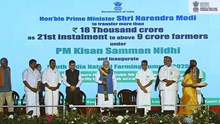
Global food prices remained largely stable in August, according to the latest report from the United Nations’ Food and Agriculture Organization (FAO). Gains in meat, sugar, and vegetable oils offset declines in cereals and dairy products. The FAO Food Price Index, which tracks international price trends of key food commodities, averaged 130.1 points in August, nearly unchanged from July’s 130.0, but still 6.9% higher than a year ago.
FAO Vegetable Oil Price Index rose 1.4% in August, reaching its highest level in over three years, driven mainly by increases in palm, sunflower, and rapeseed oil prices, while soy oil fell on expectations of ample soybean supplies. Meat prices climbed 0.6%, hitting a record high, with beef leading the rise due to strong demand from the United States and China. Ovine prices inched up, pork remained stable, and poultry fell amid abundant exports from Brazil.
In contrast, FAO Cereal Price Index fell 0.8%. Wheat prices declined due to larger harvests in the EU and Russia, while maize prices rose on higher U.S. demand for feed and ethanol. Rice prices also eased as exporters faced strong competition. Dairy prices slipped 1.3%, weighed down by weaker demand from Asian buyers, particularly for butter, cheese, and milk powders. Sugar prices edged up 0.2% after five consecutive months of decline, amid concerns over Brazil’s sugarcane crop and stronger global imports.
FAO also issued updated forecasts for global cereal production in 2025, projecting a record 2.961 billion tonnes, up 3.5% from 2024, driven by strong maize harvests in Brazil and the U.S. Global coarse grain output, including maize and sorghum, is expected to rise notably, contributing to the record production. Wheat production was slightly revised down to 804.9 million tonnes due to lower yields in China, Indonesia, and Brazil offsetting shortfalls in Nepal, Thailand, and the U.S.
Global cereal use in 2025/26 is projected at 2.92 billion tonnes, up 1.6% year-on-year, while stocks are expected to rise 3.7% to a record 898.7 million tonnes, lifting the stocks-to-use ratio to 30.6%, signaling a comfortable supply outlook. International cereal trade is forecast to grow 1.4% to 493.4 million tonnes, supported by higher wheat and rice imports in Asia and Africa.
However, FAO’s Agricultural Market Information System (AMIS) highlighted rising nitrogen fertilizer prices as a concern, warning that declining affordability compared to crop values could affect application rates and impact harvests in some regions.
















